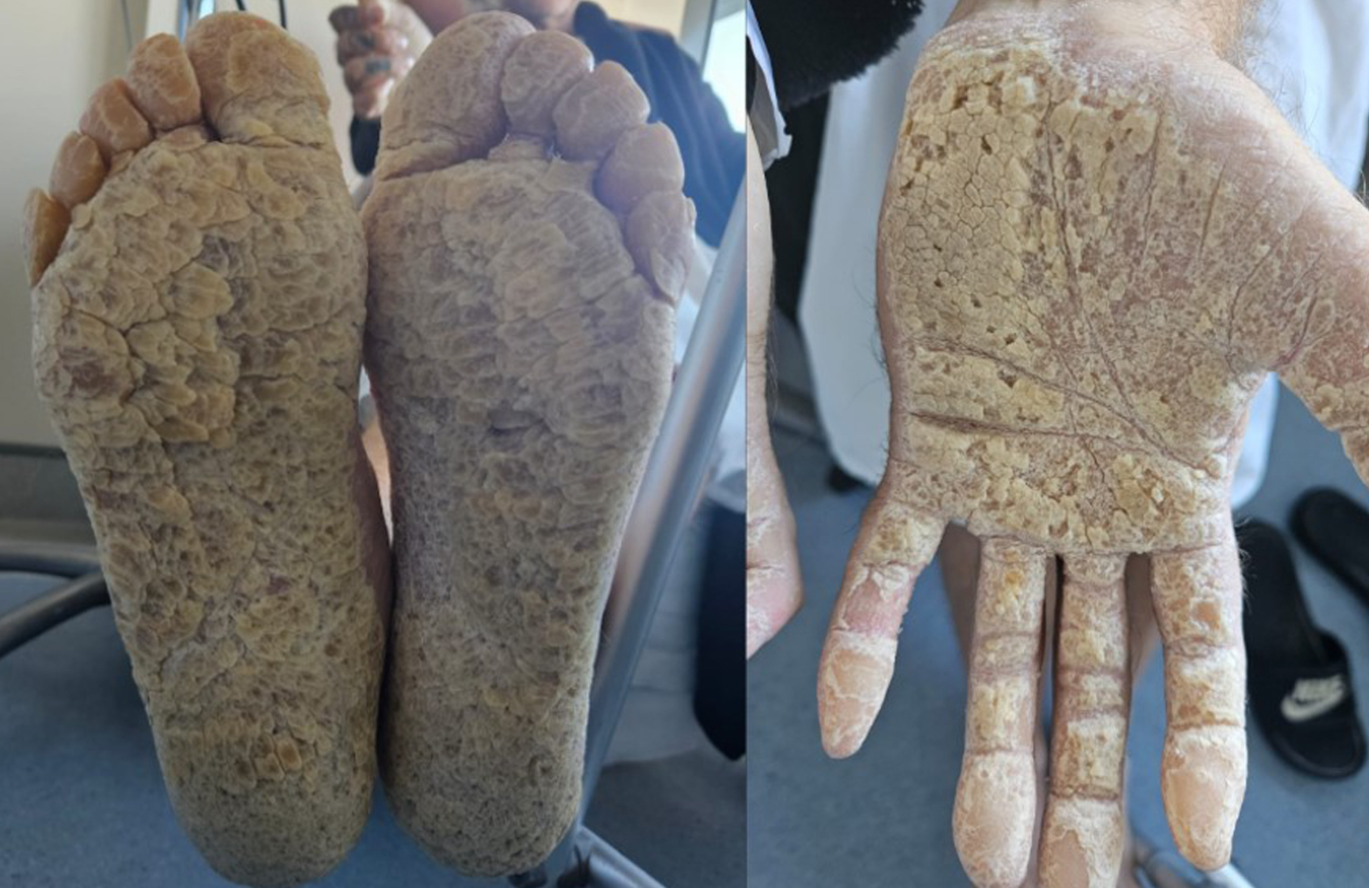A 50-year-old male patient presenting with diffuse hyperkeratotic plaques on the palms and soles accompanied by congenital sensorineural hearing loss was diagnosed with Vohwinkel syndrome, a rare autosomal dominant genodermatosis characterized by mutations in the GJB2 gene encoding connexin 26.
The patient, whose case was reported in JAAD Case Reports by Manisha Siriwardene, BBMedS, MD, and Frank Isaacs, MBBS, FACD, of the Department of Dermatology at St. Vincent's Hospital in Sydney, Australia, presented with severely disabling palmoplantar keratoderma. He was unable to work and required a full-time carer for activities of daily living because of limited dexterity and pain associated with fine movements of the hands and feet.

The researchers noted a strong multigenerational family history, with the patient's biological father, brother, daughter, two nephews, and paternal grandmother all being similarly affected, consistent with the autosomal dominant inheritance pattern of this condition.
Clinical examination revealed a honeycomb pattern of hyperkeratosis over the palms and soles, and a starfish-shaped hyperkeratosis over the knuckles causing digital constricting bands. There were no ocular abnormalities identified on examination.
What's Your Diagnosis?
- Olmsted syndrome
- Vohwinkel syndrome
- Huriez syndrome
- Punctate keratoderma
- Hereditary painful callosities.
Diagnosis and Genetic Basis
Vohwinkel syndrome, also known as keratoderma hereditaria mutilans, is a rare autosomal dominant disorder characterized by the classical triad of diffuse palmoplantar keratoderma in a honeycomb pattern, constricting fibrous bands around the digits (pseudoainhum) that may lead to autoamputation, and sensorineural hearing impairment.
Vohwinkel syndrome is associated with mutations in the GJB2 gene, which encodes connexin 26, a gap junction protein critical for epidermal and cochlear function. These mutations account for both the dermatologic and auditory features of the disorder.
The condition typically causes significant morbidity through several mechanisms. The researchers highlighted that patients with Vohwinkel syndrome often report psychological distress as a result of increased morbidity and pain associated with their condition. Additional complications include secondary skin infections resulting from fissuring of hyperkeratotic plaques and the potential for digital autoamputation caused by progressive constriction bands.
Differential Diagnosis
Olmsted syndrome presents with mutilating palmoplantar keratoderma and periorificial hyperkeratotic plaques but is not associated with sensorineural hearing loss. It is typically linked to mutations in the TRPV3 gene rather than GJB2.
Huriez syndrome is characterized by the triad of congenital scleroatrophy, hypoplastic nails, and palmoplantar keratoderma, a constellation of findings not present in this case.
Punctate keratoderma manifests as small round bumps along the palms and soles as opposed to the thick, diffuse plaques seen in this patient.
Hereditary painful callosities present with keratotic lesions over pressure points on the palms and soles, a pattern not demonstrated here.
Accurate diagnosis of Vohwinkel syndrome requires careful clinical examination and awareness of the characteristic features. Early recognition and management can help prevent complications such as pseudoainhum and digital autoamputation, and address associated hearing impairment.
The researchers declared no conflicts of interest.
